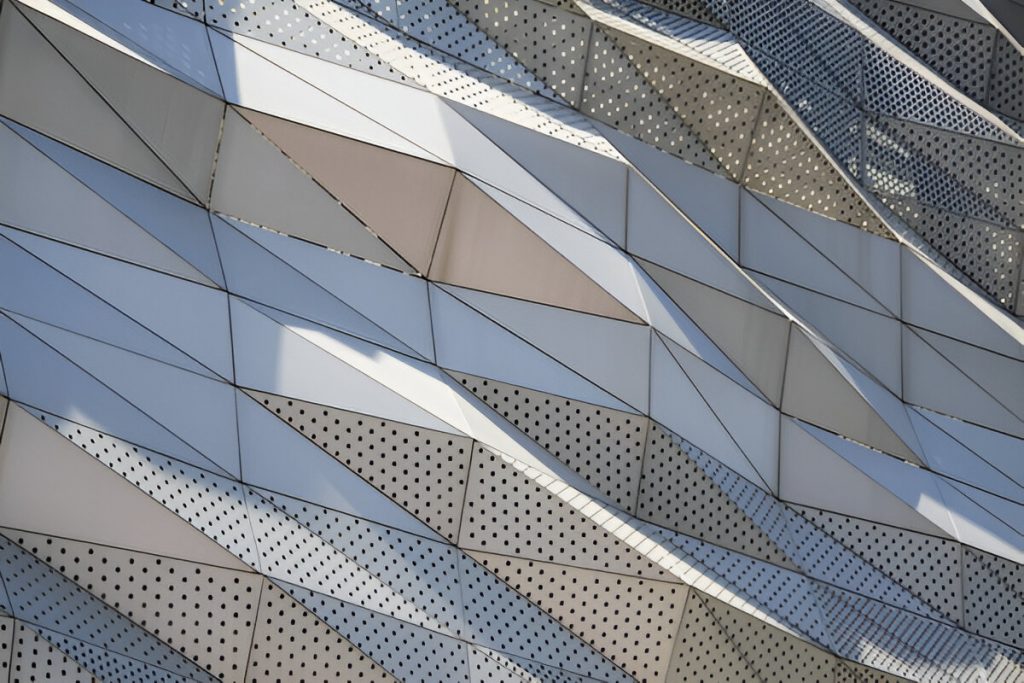
Perforated sheets are among the most versatile materials in industrial, architectural, and everyday applications. These sheets, made by creating a pattern of holes, slots, or other shapes in a material, offer a perfect balance of functionality and aesthetics. With various designs, materials, and uses, perforated sheets play a significant role in modern engineering and design.
What Are Perforated Sheets?
A perforated sheet is a flat piece of material—commonly metal, plastic, or composite—that features a repetitive pattern of holes or openings. These holes can be circular, square, rectangular, hexagonal, or customized to suit specific requirements. The openings are created using processes such as punching, laser cutting, or drilling, ensuring precision and uniformity.
Materials Used
Perforated sheets are available in a range of materials, each chosen based on its intended use:
- Metals: Stainless steel, aluminum, copper, galvanized steel, brass, titanium, and mild steel are popular due to their strength and durability.
- Plastics: Polycarbonate, PVC, and acrylic sheets are lightweight and corrosion-resistant.
- Other Materials: Wood, fiberboard, and composite materials are occasionally perforated for decorative or niche applications.
Manufacturing Techniques
The production of perforated sheets involves advanced techniques to ensure consistency and precision. Common methods include:
- Punching: A die presses through the sheet material to create holes.
- Laser Cutting: High-precision lasers cut intricate patterns.
- Drilling: Suitable for low-volume or specialized designs.
Applications of Perforated Sheets
1. Industrial Applications
Perforated sheets are widely used in industrial settings for filtration, sieving, and separation. They are integral in machinery as guards, safety screens, and anti-slip surfaces, ensuring worker safety and equipment efficiency.
2. Architecture and Design
In architectural projects, perforated sheets serve both decorative and functional purposes. They are used for building facades, partitions, ceilings, and sunshades. Their unique patterns allow light and air to pass through while adding visual appeal.
3. Acoustic Solutions
Perforated sheets are effective in sound absorption and noise reduction. They are employed in auditoriums, offices, and industrial environments to improve acoustics by dissipating sound energy.
4. Ventilation and Airflow
These sheets enable airflow while maintaining structural integrity, making them essential for HVAC systems, ventilation ducts, and outdoor equipment enclosures.
5. Food and Agriculture
In the food industry, perforated sheets are used for sorting, drying, and draining processes. They help in agricultural settings to separate grains, fruits, and seeds efficiently.
Advantages of Perforated Sheets
- Lightweight and Strong: Despite their reduced weight, perforated sheets maintain structural integrity.
- Customizable Designs: Patterns and hole sizes can be tailored to specific needs.
- Corrosion Resistance: With appropriate materials, they withstand harsh environments.
- Eco-Friendly: Scrap material generated during production is often recyclable.
Conclusion
Galvanised Perforated sheets are an indispensable part of modern engineering and design. Their ability to combine strength, functionality, and aesthetics makes them a go-to choice for industries ranging from construction to manufacturing. With continuous advancements in materials and production techniques, the versatility of perforated sheets is only set to expand further.



